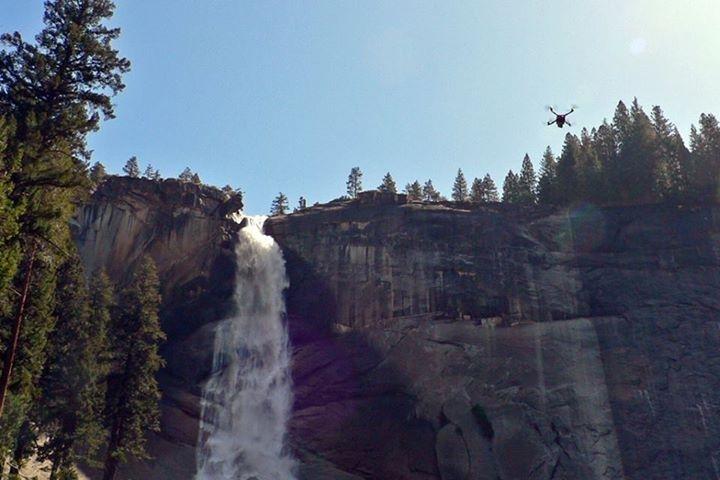
Update on May 6, 2014: Another national park has followed Yosemite’s lead in banning camera drones. Park officials in Utah’s Zion National Park have also noticed a large increase in drone usage, and recently volunteers witnessed a camera drone flying close to a herd of bighorn sheep, causing them to scatter. Such activities constitute wildlife harassment, according to park superintendent, Jim Milestone. “I am sure most people who fly drones have no desire to harm wildlife or endanger our other visitors. Many may not even know that it is illegal to fly a drone here at Zion,” Milestone said. “We hope that by educating the public about the reasons behind the restrictions, we will increase their understanding and compliance and help to protect the park.”
It seems someone working for Yosemite National Park had a vision. A vision where the park’s tranquility is permanently shattered by the ugly sound of swarms of camera-equipped drones buzzing noisily within its borders, turning a peaceful day out into anything but.
The National Park Service, which operates the California park, said in a statement released over the weekend that due to the negative environmental impact caused by an increasing number of drones being flown by park visitors, it’s decided to ban their use “under all circumstances,” citing regulations outlined in the Code of Federal Regulations (CFR).
‘Not conducive to wilderness travel’
The Service said drones have been witnessed “filming climbers ascending climbing routes, filming views above tree-tops, and filming aerial footage of the park,” adding, “Drones can be extremely noisy, and can impact the natural soundscape. Drones can also impact the wilderness experience for other visitors creating an environment that is not conducive to wilderness travel.”
It went on to explain that the use of the flying machines can interfere with emergency rescue operations and can “cause confusion and distraction for rescue personnel and other parties involved in the rescue operation.”
A negative impact on wildlife, such as nesting peregrine falcons on cliff walls, was also given as a reason for the ban.
Drone popularity
Thanks to their drop in price and easy operation, many videographers have realized drones offer a cheap and relatively simple way of gathering stunning aerial imagery of natural wonders like Yosemite. The problem, as the National Park Service points out, is that they make one hell of a racket, with increased ownership likely to result in even more noise in locations famed for their wildlife and scenery.
The Service may, however, receive some opposition from drone users regarding its ruling, especially as the CFR regulation it cites makes no mention of drones or model aircraft, speaking only of actions involving “delivering or retrieving a person or object by parachute, helicopter, or other airborne means.” Those interested in the details of the legal issues connected with the ruling should check out Forbes’ analysis here.
(This article was originally published on May 5, 2014.)


